
News




Join us at the ISC Open House for a morning of reconnecting with the scientific community, exploring cutting-edge facilities, and learning about the exciting future of science at our university. Enjoy catered breakfast, lab demos, greenhouse tours, and updates from all ISC departments: Alumni, guests, faculty, staff, and students welcome!

Each summer William & Mary students from different backgrounds with diverse academic interests come together in a vibrant community centered on a shared passion for research.







Class of 2024 Biology Graduation

Jessica Shelton, a beloved staff member in William & Mary's Biology Department, passed away on May 9, 2024, leaving behind a legacy of dedication, creativity, and compassion that touched the lives of everyone in the community.

As scientists all over the world grapple with the impact of global climate change, biology and environmental science major Olivia Cunningham ’25 and neuroscience major Megan Fleeharty ‘24 are throwing their lab coats in the ring to identify potential solutions to the most pressing environmental concern of our time.


The Biology Department within William & Mary has been a center for osprey work for more than 50 years. Over that time, the department has supported nine graduate students who have worked with osprey including Bob Kennedy, G’71, Jerry Via, G’75, Chris Stinson, G’76, Gary Seek, G’77, Kevin Roberts, G’82, Tim Kinkaid, G’85, Peter McLean, G’86, Andy Glass, G’07 and Michael Academia, G’22.


The College Woods is one of the reasons that William & Mary’s campus is so special. Not many schools have a 900+ acre woodland attached to their campus, and none has the history and biodiversity of our beloved College Woods.



More than 80 undergraduates have applied for Charles Center Honors Fellowships for summer ’24, marking surging interest in a program that provides up to $4,000 to rising seniors to conduct ten full-time weeks of research.


Madeleine Harris, a senior at William & Mary, wrote this piece as part of the NASW Perlman Virtual Mentoring Program with help from Eli Kintisch, a contributor to Science magazine. She is a Neuroscience major with a minor in Biochemistry, and a member of the Flat Hat.


Students in introductory biology (BIOL 203), along with Biology faculty, staff, and graduate and undergraduate student teaching assistants, enjoyed frozen treats on September 14, 2023, while getting to know each other.


The large hawks have become a familiar sight to waterfront homeowners who like to keep track of nests near their property, said Bryan Watts, director of William & Mary’s Center for Conservation Biology. But Watts and his colleagues have increasingly heard from residents worried about the birds’ fate after seeing fewer of them. The biology center’s new research confirms those concerns. They found that osprey in the lower Chesapeake Bay are failing to successfully reproduce. It’s the lowest number of osprey chicks that officials have seen since the information started being recorded in the 1970s.

2023 Biology Graduation and Award Recipients


Over winter break, 14 students and two Biology faculty explored human-wildlife conflicts in the Anthropocene on a six-day camping trip at 10 sites throughout Florida.



With its modest title, “Pests” might be mistakenly shelved with mouse-proofing guides. But Bethany Brookshire’s new book is something far more ambitious. A lively and fascinating work of science writing, “Pests” explores, as its subtitle promises, “how humans create animal villains” — including, naturally, mice.

Congratulations! Lamia Wahba is a former honors student in the Shakes Lab in Biology and a Beckman Scholar! She is the newest addition to The Rockefeller University faculty, discovered a key mechanism of non-genetic inheritance in the nematode C. elegans, and has since launched a deeper investigation into the mysteries of non-genetic inheritance. Wahba will join Rockefeller January 1, 2023, as a tenure-track assistant professor and head of laboratory.


Announcing the winners of the 2nd annual departmental Fall Festival/Halloween Door Decorating Contest!



W&M Biology Alumnus Dr. Joseph J. Torres, Professor Emeritus at the College of Marine Science, University of South Florida, recently published a text/reference book.







Cleve Francis was a graduate student of G. R. "Jack" Brooks in the Department of Biology during the late 60s. He was a huge talent as a singer, self-taught guitar player and folk songwriter. After he finished his master's degree, he went on to medical school, then specialized in cardiology. The Washington Post lead article in the Style section C1-2 on 7 July 2022 tells his story.

The IIC-sponsored project is teaming scientists with Indigenous people to preserve and monitor the vegetation of their bio-rich ancestral lands and share knowledge with each other. The project is centered in the trans-Mexican volcanic belt surrounding the southern end of Mexico City.






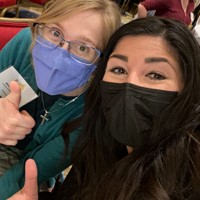
In November, a group of William & Mary undergraduates attended the annual Commonwealth of Virginia Cancer Research Conference, and two of members of the Class of 2023 came back to Williamsburg bearing “best presentation” honors.
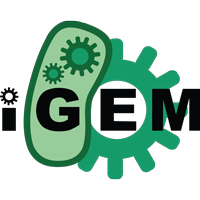
William & Mary’s undergraduate iGEM team won a Gold Medal and was nominated for a major award at the iGEM Giant Jamboree, the annual conference and award ceremony of the International Genetically Engineered Machine (iGEM) Foundation.
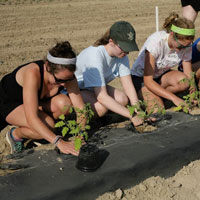
The nine-year roadmap sets out specific suggestions in key areas of the university’s multi-pronged approach to a more sustainable future.

William & Mary biology graduate student nominated for a prestigious award for his research on osprey nesting success using citizen science and nest-web cameras.

As the world anxiously awaited the first COVID-19 vaccine, Colleen Gorman ’95 played a crucial role at Pfizer in ensuring that correct practices were being followed during clinical trials and preventing any issues that arose from being repeated.
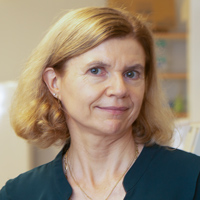
Many of the most effective human medicines and therapies have had their origin in nature. Myriam Cotten says there’s a good reason for researchers to look to flora and fauna when seeking new therapies.

Patch-Seq is shorthand for “patch-clamp, followed by next-generation sequencing.” It’s a collaborative procedure that’s only been performed in a few labs.
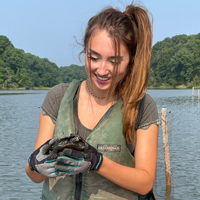
Diamondback terrapins have always found it hard to catch a break.
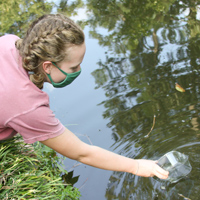
The Crim Dell jellyfish are back — bigger and more numerous than ever.
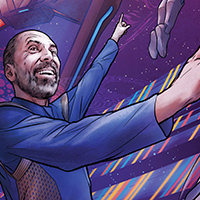
Mohamed Noor ’92 brings the science to science fiction as a consultant for “Star Trek: Discovery”
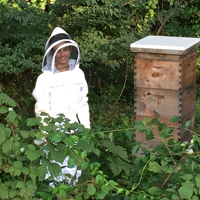
With the promotion of sustainable practices at the forefront of these grants, the Committee on Sustainability members approved a total of $35,712 to be spent across a broad spectrum or projects, from academia and research, to operations that advance sustainability on campus.
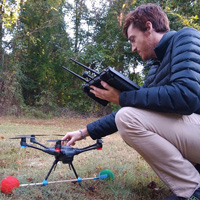
The Delmarva Peninsula, which includes Virginia’s Eastern Shore, is the avian version of a southbound interstate during the fall migration of raptors and songbirds.
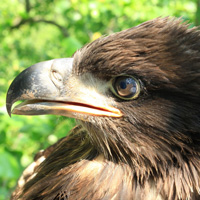
It’s a new era for bald eagles in the Chesapeake Bay drainage — and the end of an era for a veteran team of eagle researchers.
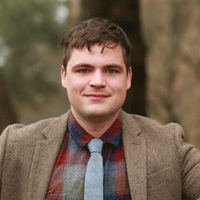
It’s OK to find your way as you go, and most importantly to decide what’s right for you in your own time, according to Evan Kikla ’21.
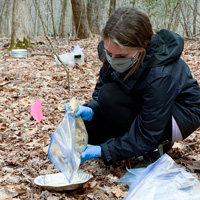
Everybody knows that squirrels love nuts, but every squirrel knows that some nuts are better than others.

A new minor program in integrative conservation will be offered to William & Mary undergraduates as early as the fall, 2021 semester.
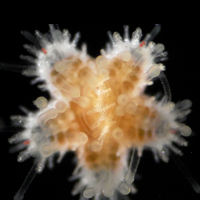
To grow, the juvenile sea stars must eat, and W&M researchers discovered that what the young sea stars eat often turns out to be each other.
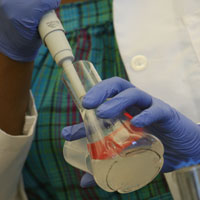
A digital showcase of undergraduate accomplishment will roll out throughout the month of April.

Three William & Mary students have been named Goldwater Scholars, joining a select group of undergraduates studying the natural sciences, mathematics and engineering.
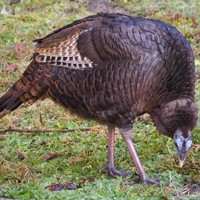
Ornithology students at William & Mary traditionally travel the commonwealth, piling into vans at 3 a.m. to head out to where the birds are. But because of the pandemic, they can't get in a van together. Instead, they are doing it all on foot.
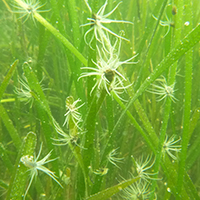
New research shows that biodiversity is important not just at the traditional scale of short-term plot experiments, but when measured over decades and across regional landscapes as well.

William & Mary biologist Shantá D. Hinton has become a member of the Public Affairs Advisory Committee of the American Society of Biochemistry and Molecular Biology (ASBMB).














